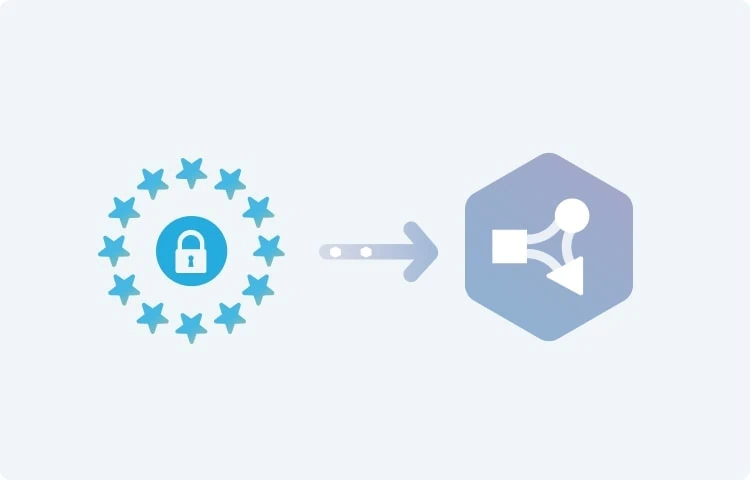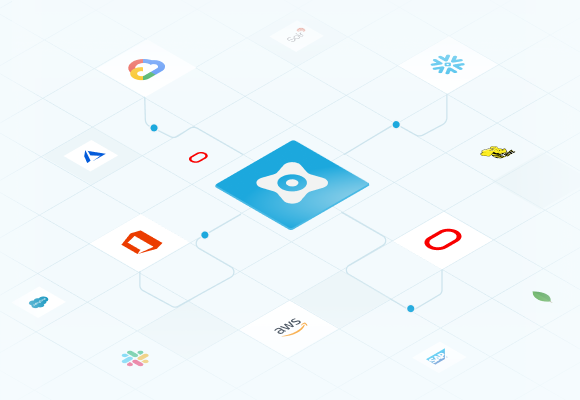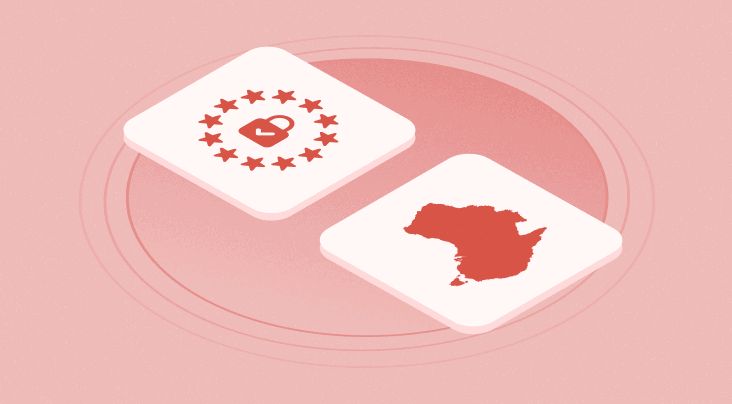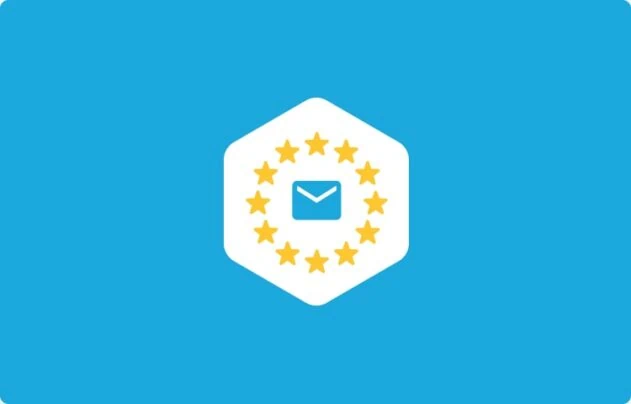In 2016, the European Commission replaced its long-existing Data Protection Directive with a modernized version, the General Data Protection Regulation (GDPR). The GDPR is based on the EU Charter of Fundamental Rights, which considers personal data protection as an individual’s fundamental human right.
The GDPR aims to protect personal information by setting up strict guidelines and policies for businesses handling PI. One of the important components or requirements of compliance is GDPR data mapping. It is a set of processes that enable organizations to gain a thorough understanding of their data flows and how an individual's personal data (user or customer) is processed across the organization.
For organizations to comply with this regulation and ensure that all personal data is processed appropriately, they need to have a solid grip on all their customers’ data and map it accordingly. Traditional methods may make this task virtually impossible, and with data collection and processing growing and changing rapidly, organizations will need to incorporate a tool that will help them map their data efficiently.
Data Mapping under the GDPR
Data mapping is an essential component of the GDPR. It is considered the foundational step for fulfilling all other legal requirements under the GDPR, such as responding to data subjects’ requests, conducting data protection impact assessments, or maintaining records of data processing activities. A few examples of data mapping-driven privacy compliance are as follows:
Records of Processing Activities
Article 30 of the GDPR requires controllers and processors to maintain a record of processing activities (RoPAs). RoPAs include process activity information, such as the purpose of processing, legal basis, consent status, cross-border transfers, DPIA status, and more. Data mapping helps organizations comply with GDPR by collecting and maintaining a list of data processing activities across the business.
Data Protection Impact Assessments
Article 35 of the GDPR requires organizations to carry out data protection impact assessments (DPIAs) where processing is likely to result in a high risk to individuals. Such a DPIA must take into account the nature, scope, context, and purposes of the processing. For conducting efficient DPIAs, organizations must be able to document what types of data they are collecting, when and how that data is being collected and used, where the data is being stored, and how data flows through various systems and vendors, all of this is achieved via data mapping.
Breach Management
Article 33 of the GDPR requires organizations to notify personal data breaches that are likely to cause risk to the rights and freedoms of data subjects to the supervisory authority no later than 72 hours after becoming aware of the breach. Where the risk to the rights and freedoms of data subjects is high, organizations must notify personal data breaches to impacted data subjects without undue delay. Data mapping helps organizations swiftly identify impacted data subjects and compromised data in any security incident. It also enables organizations to assess the risks to the rights and freedoms of data subjects arising from a security breach, thereby helping organizations report only the personal data breaches that meet a required risk threshold to the proper stakeholders. As a result, they are able to meet notification timelines under the GDPR.
Consent Management
While relying on the user’s consent as a lawful basis for data processing, Article 4 of the GDPR requires such consent to be freely given specific, informed, and unambiguous indication of the data subject’s wishes. Besides, data subjects must also be able to withdraw their consent at any time and without any detriment. Data mapping helps organizations identify which processing activities rely on consent as a legal basis, highlight where consent capture mechanisms may be needed, and facilitate consent revocation.
Data Subjects’ Rights Fulfillment
GDPR grants several rights to data subjects with respect to their personal data, including the right to
- access a copy of personal data,
- rectify or erase personal data,
- restrict the processing of personal data, and
- port personal data.
Once these rights are exercised by the data subject, the data controller must respond to such requests within stipulated time frames. Data Mapping helps organizations identify where the data subject’s data resides and facilitate the data subject's request. It enables organizations to respond to a data subject’s request within the stipulated deadline under the GDPR.
Key Elements of Data Mapping
The following are the key elements of a data map:
- Enables businesses to organize, catalog, manage, and structure data for operational needs;
- Enables organizations to easily access and find relevant data whenever required;
- Makes data management and protection more efficient - i.e., riskier data has more robust security;
- Enables data flow tracking; and
- Helps maintain adequate records of data processing activities.
Key Challenges of Data Mapping
There are multiple data collection and processing elements combined with in-house and cloud-based application and storage infrastructure, with highly fluid data sharing and processing agreements in place. With more than 80% of enterprise workloads now moving to the cloud, organizations are finding it hard to document and track the flow of information within their vendor’s cloud infrastructure.
In most organizations, data catalogs and maps are hidden away in outdated spreadsheets and Powerpoint or Visio diagrams, making it impossible to bring clarity to this gigantic mesh of interconnected interfaces, systems, and processes.
Also, without a collaborative documentation and knowledge-sharing environment, it is typical for such business process knowledge to get locked up in the minds of subject matter experts, making it nearly impossible to build and maintain an accurate record of data.
Data mapping enabled by PrivacyOps methodology helps resolve all these challenges. It provides a fully automated, single, and secure platform to organizations that help them conduct efficient and holistic data mapping.
Data Mapping & the PrivacyOps Framework
A good data mapping solution helps companies gain full visibility and control of personal data and facilitates collaboration - not just within the organization but also externally.
Therefore, the PrivacyOps framework requires a system of record, a system of knowledge, a system of engagement, and a system of automation to bring all your SMEs to one place to document and track the flow of information in one platform. Any data mapping solution under the PrivacyOps methodology provides the following features:
A System of Record
A system of record maintains:
- Information flows—within the organization, between organizations (processors, contractors, suppliers) and outside the organization, and also data flow across countries;
- Extensive metadata for every element within a data map, including—Data Type, Data Format, Location, Accountability, Access list, etc.;
- A definition of all the PD attribute types handled by the data map element;
- A record of the purpose of data collection, processing, or storage, along with legal justification (e.g., consent) for those activities; and
- Easy-to-generate Article 30 (Record of Processing) reports that can be shared internally and made available to supervisory authorities & auditors instantly.
A System of Knowledge
A system of knowledge:
- Provides an expandable, organization-centric icon library;
- Allows users to define components once and use them within multiple data maps or business process flow diagrams;
- Allows users to clone and enhance existing data maps making the process efficient and extensible;
- Allows users to describe the information flow in a visual, easy-to-understand artboard;
- Ensures that the right users and SMEs create, collaborate and provide feedback on information flows;
- Provides intelligent connection options that track PD attributes along with the information flow;
- Acts as the inventory of all business flow assets;
- Allows users to describe the information flow in a visual, easy-to-understand artboard;
- Acts as the interface to the system of record to glean insights into data flow by capturing all the characteristics of that flow, including direction, properties, restrictions, and ownership;
- Reduces uncertainties in business flows where one or more subject matter experts would normally need to be consulted; and
- Supports business and organizational decision-making capabilities through a combination of business flow records, component metadata, system ownership, and system-generated insights, including data classification and privacy alerts.
A System of Engagement and Collaboration
A system of engagement enables:
- Mapping complex data flows and business process diagrams on a flexible and collaborative artboard;
- Working with multiple subject matter experts and process/solution owners seamlessly within a single, collaborative data map;
- Messaging capabilities to communicate with and invite collaborators;
- Working with teams on any device across multiple platforms and geographies; and
- A collaborative, easy-to-use environment ensures the data map is always up-to-date through automation, notifications, and policy alerts.
A System of Automation and Insight
A system of automation enables:
- Automated data map creation through metadata ingestion;
- Automatic scanning and classification of data in hundreds of locations to populate properties for map elements;
- The use of PD attributes discovered during live data scans as component metadata within data maps;
- Periodic re-scans to ensure the data is always up-to-date;
- Automatic monitoring of map elements and process flows for compliance violations such as data collection without consent, improper access privileges, etc.;
- Breach impact analysis as it applies to data flows and business processes;
- Policy-based alerts to identify weak security processes and/ or non-compliance to legal or regulatory requirements; and
- Consent tracking at each stage of the data flow and highlighting data that may be collected, stored, or processed without consent.
Benefits of Automated GDPR Data Mapping
There are several benefits that organizations can reap with an automated data mapping solution and streamline the compliance process, such as:
- Automating data mapping can help organizations speed up their compliance process. Data is spread across multiple systems, resources, and applications. These resources may further be spread across multiple cloud service providers, geographies, and accounts. Mapping such a huge volume of data via a manual approach is fairly time-consuming and an inefficient process.
- Automation can reduce human error significantly. Automated solutions leverage advanced algorithms and technologies like AI/ML to discover the data and classify it with high accuracy, ensuring a reliable mapping process.
- Data mapping is essential to gain a complete view of how the data moves across an organization between departments, systems, and resources. Data flow visibility allows organizations to effectively identify potential risks and resolve them accordingly.
- Data protection laws like the EU’s GDPR require organizations to keep a record of processing activities (RoPA) to demonstrate compliance. Automated data mapping generates such reports with a few clicks and keeps the records up-to-date as new processing activities are carried out.
- Automation is a critical component that allows for data mapping, especially in hyperscale environments that see new data assets and datasets added to the environment sporadically.
Conclusion
Data mapping with manual methods will just not cut it, given the added time, cost, and resources - not to mention the risk of data sprawl and human error. To benefit from a truly robust data mapping structure, every business needs to adopt the PrivacyOps framework. Investing in such a framework will be immensely beneficial for any organization as it will be ready to comply with all data privacy regulations - not just the current ones but also those that are upcoming.














